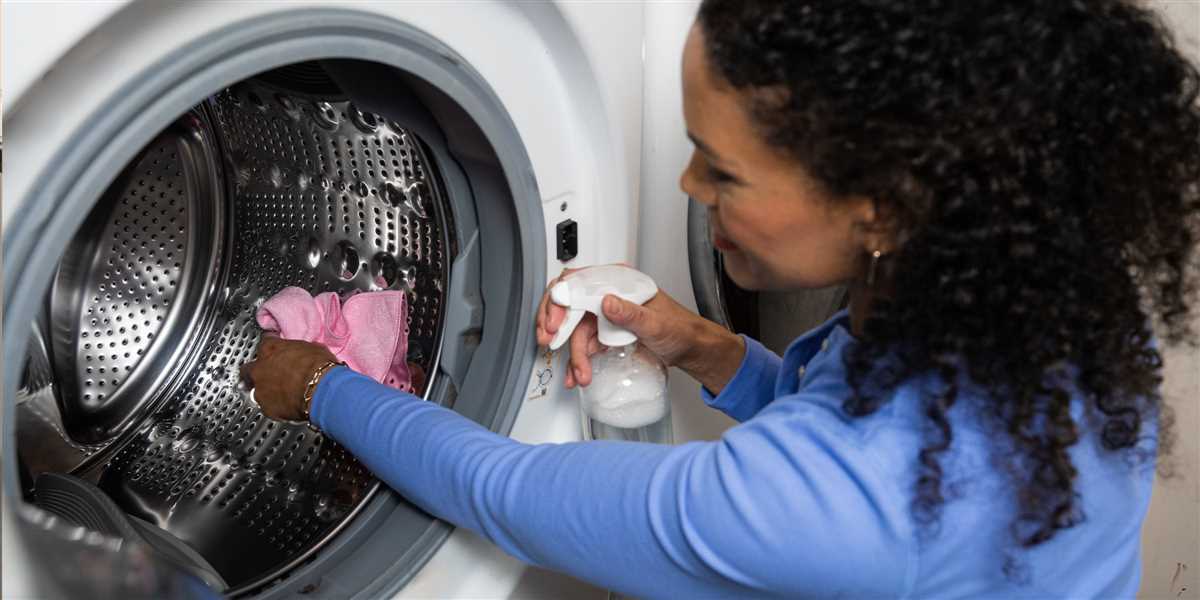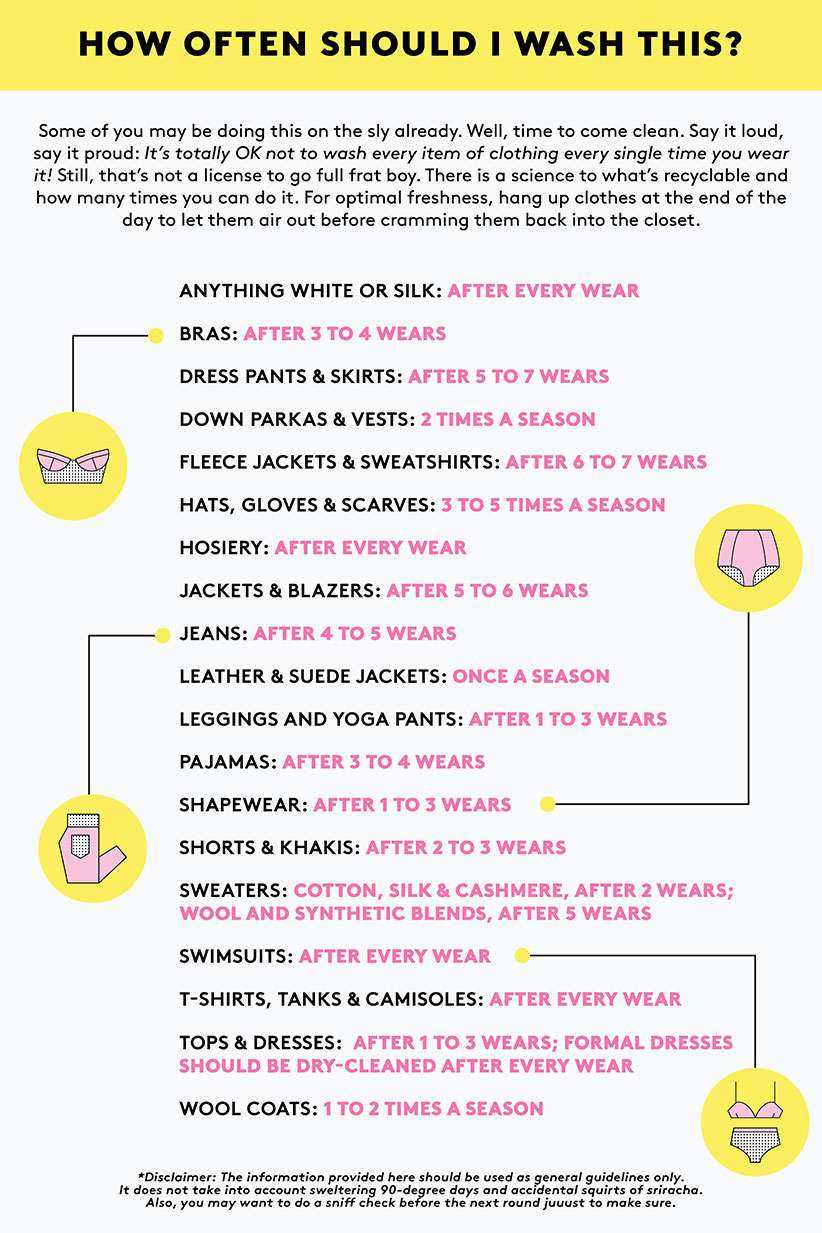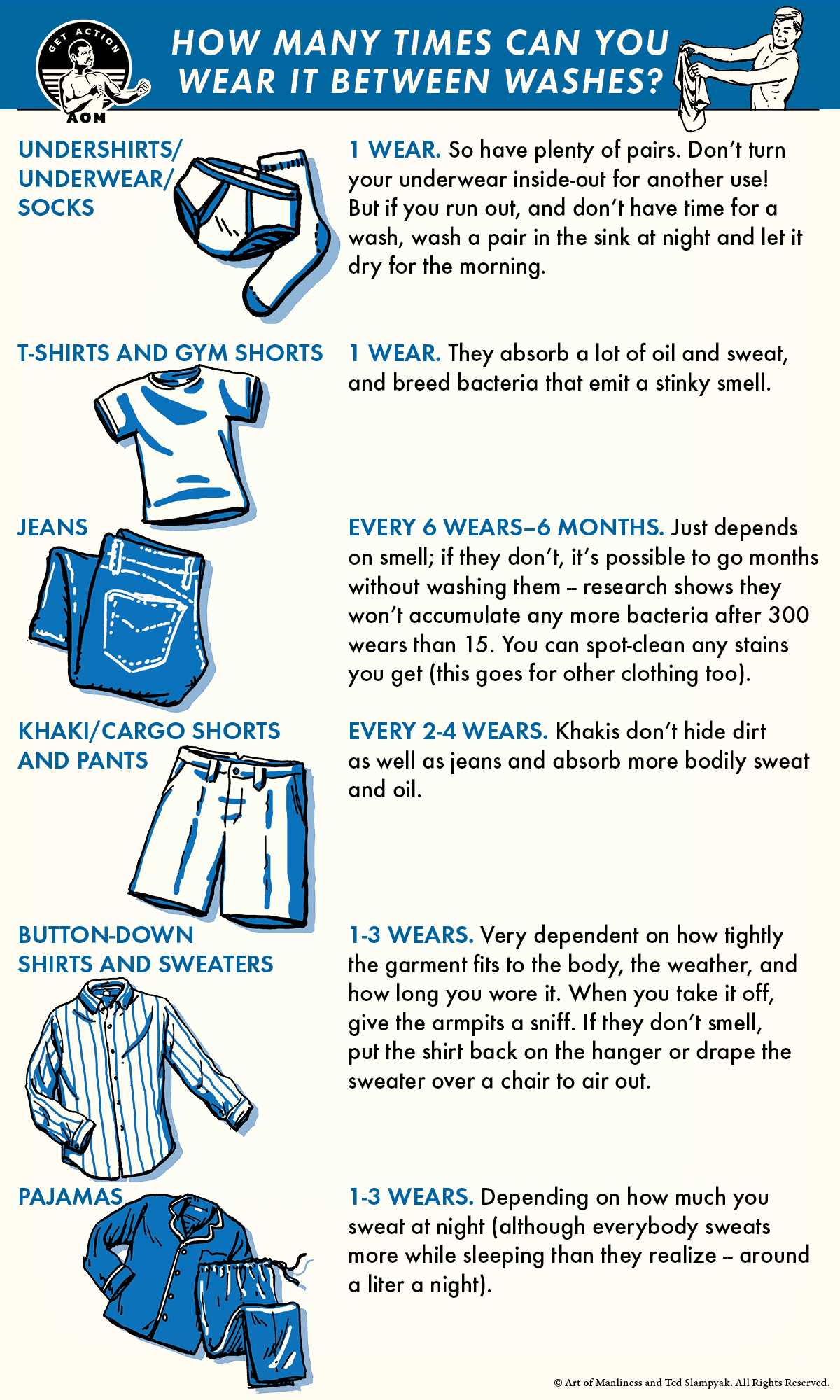




Keeping your clothes clean and fresh is not only important for your personal hygiene, but also for making a good impression. Whether you’re attending a job interview or going on a date, clean and fresh clothes can boost your confidence and help you feel your best.
There are several simple steps you can take to extend the lifespan of your clothes and keep them looking and smelling great. Firstly, always read the care labels on your garments and follow the instructions carefully. Each fabric requires different care, and following the recommended washing and drying methods can prevent damage and fading.
Another tip is to sort your laundry properly before washing. Separating your clothes by color and fabric type can prevent colors from bleeding and keep delicate items from being damaged. This small step can make a big difference in the longevity of your clothes.
Additionally, using the right detergent and following the recommended dosages can help preserve the quality of your clothes. Opt for a detergent that is suitable for your fabric type, and use less detergent for lighter loads. This not only saves money and protects the environment, but also prevents residue buildup on your clothes.
In summary, taking a few extra minutes to properly care for your clothes can go a long way in keeping them clean and fresh for longer. By following the care instructions, sorting your laundry, and using the right detergent, you can maintain the quality and appearance of your clothes, making them last longer and look their best.
Tips for Maintaining Clean and Fresh Clothes
- Separate your laundry: Sort your clothes into different piles based on their colors and fabric types. This will help prevent color bleeding and damage to delicate items.
- Pre-treat stains: When you notice a stain on your clothes, it’s important to pre-treat it before washing. Use a stain remover or a mixture of water and mild detergent to gently rub the stain.
- Follow care instructions: Always read the care labels on your clothes before washing or drying them. Follow the recommended temperature settings and washing instructions to avoid shrinking or damaging the fabric.
- Use the right amount of detergent: Using too much detergent can leave residue on your clothes, while using too little may not effectively clean them. Follow the recommended dosage on the detergent packaging for best results.
- Wash in cold water: Washing your clothes in cold water not only helps to preserve colors, but it also saves energy. Cold water is often sufficient for most fabrics, unless otherwise specified on the care label.
- Turn clothes inside out: Before washing your clothes, turn them inside out. This helps to protect the outer surfaces and prevent fading. It’s especially important for dark or vibrant-colored items.
- Avoid overloading the washing machine: Overloading the washing machine can prevent clothes from getting clean and can cause excessive wear and tear. Follow the manufacturer’s instructions for the maximum load size.
- Hang clothes to air dry: Whenever possible, air dry your clothes instead of using a dryer. This not only saves energy, but it also helps to reduce shrinkage and extend the lifespan of your garments.
- Strong>Store clothes properly: When you’re not wearing certain items, store them in a cool, dry place. Avoid hanging heavy items on delicate fabrics to prevent stretching and distortion. Use mothballs or cedar blocks to repel insects and keep your clothes fresh.
Proper Storage Techniques
Proper storage techniques play a crucial role in keeping your clothes clean and fresh for longer. Here are some tips to help you store your clothes effectively:
1. Clean your clothes before storage
Make sure your clothes are properly cleaned before storing them. Stains and dirt can attract pests and lead to unpleasant odors. Wash or dry-clean your clothes according to their care instructions.
2. Sort and organize
Sort your clothes by category, such as shirts, pants, dresses, etc. This will help you locate specific items easily. Use hangers for delicate items and fold clothes neatly for storage. Consider investing in storage bins or drawers to keep everything organized.
3. Use breathable garment bags
For delicate and special occasion clothes, use breathable garment bags to protect them from dust, insects, and moisture. Avoid using plastic bags as they can trap moisture and lead to mold or mildew growth.
4. Avoid overpacking
Do not overpack your storage containers or closets. Overpacking can lead to wrinkling, stretching, and damage to your clothes. Allow some breathing space for proper air circulation.
5. Store in a cool, dry place

Avoid storing your clothes in damp or humid areas, as moisture can cause fabric damage and unpleasant odors. Choose a cool, dry place like a closet or a storage area to keep your clothes fresh.
6. Use cedar or lavender sachets
Consider placing cedar or lavender sachets in your storage containers or closets. Cedar repels moths and other insects, while lavender adds a pleasant fragrance and helps deter pests.
7. Rotate your wardrobe

Rotate your wardrobe seasonally to ensure that all your clothes are being used regularly. This helps prevent clothes from sitting unused for extended periods, which can lead to deterioration and a stale smell.
Regular Washing Routine
Establishing a regular washing routine for your clothes is essential to keep them clean and fresh for longer. Follow these steps to ensure an effective washing routine:
- Sort Clothes: Before starting the washing process, separate your clothes into different piles based on color, fabric type, and level of dirtiness. This will help prevent color bleeding and protect delicate fabrics.
- Pre-Treat Stains: Check each garment for any stains and treat them before washing. Use a pre-wash stain remover or apply a dab of detergent directly to the stain. Let it sit for a few minutes before washing.
- Select Appropriate Detergent: Choose a suitable detergent based on the fabric type and level of dirtiness. Read the instructions on the detergent packaging for guidance on the recommended amount to use.
- Choose the Right Water Temperature: Adjust the water temperature on your washing machine according to the care labels on your clothes. Hot water is effective for removing stains and sanitizing, while cold water is ideal for delicate fabrics and colored items.
- Load the Machine Correctly: Place the sorted clothes into the washing machine, taking care not to overload it. Overloading can prevent proper cleaning and cause excessive wear on the machine.
- Use the Proper Washing Cycle: Select the appropriate washing cycle for your clothes. Use a gentle cycle for delicate items and a regular or heavy-duty cycle for heavily soiled clothes.
- Avoid Overdrying: Overdrying clothes can cause them to shrink, fade, or become brittle. Remove the clothes from the dryer while they are still slightly damp, and hang or lay them flat to air dry.
By incorporating these steps into your regular washing routine, you can ensure that your clothes stay clean, fresh, and in good condition for longer.
Choosing the Right Detergent

Choosing the right detergent is essential to keep your clothes clean and fresh for longer. Here are some factors to consider when selecting a detergent:
1. Type of Fabric

- Delicate Fabrics: If you have delicate fabrics like silk or wool, opt for a mild detergent specifically designed for delicate materials. These detergents are formulated to protect the fabric and keep it soft.
- Cotton and Synthetic Fabrics: For everyday clothes made of cotton or synthetic fibers, a regular detergent works well. Look for one that cleans effectively without causing any damage to the fabric.
2. Stain Removal Power
Consider the stain removal power of the detergent. If you often deal with tough stains like grease or grass, choose a detergent that is known for its stain-fighting abilities. Look for detergents that mention stain removal or have built-in stain-fighting ingredients.
3. Fragrance Preference

Some detergents have a strong fragrance, while others are scent-free. Choose a detergent with a fragrance you enjoy, as it can give your clothes a pleasant smell.
4. Environmental Considerations
If you are concerned about the environmental impact, look for detergents that are labeled as eco-friendly or biodegradable. These detergents are generally made with plant-based ingredients and are less harmful to the environment.
5. Allergies and Sensitivities
If you or your family members have allergies or sensitivities to certain chemicals, opt for a hypoallergenic detergent that is free from fragrances, dyes, and harsh chemicals. These detergents are formulated to be gentle on the skin.
6. Cost
Consider your budget when choosing a detergent. There are a variety of options available at different price points. However, keep in mind that cheaper detergents may not provide the same level of cleaning power or protection for your clothes.
7. User Reviews
Lastly, read reviews from other users to get an idea of the detergent’s effectiveness. Look for reviews that specifically mention the factors that are important to you, such as stain removal or fragrance.
| Detergent Brand | Type | Stain Removal Power | Fragrance | Environmental Impact | Price |
|---|---|---|---|---|---|
| Tide | Regular | Excellent | Various scents available | Some eco-friendly options | Medium |
| Seventh Generation | Eco-friendly | Good | Unscented | Eco-friendly | High |
| Woolite | Delicate | Good | Various scents available | Some eco-friendly options | Medium |
Remember, choosing the right detergent can make a significant difference in the longevity and freshness of your clothes. Consider the factors mentioned above and experiment with different brands until you find the one that suits your needs the best.
Stain Removal Methods
Stains can be a real nuisance when it comes to keeping your clothes clean and fresh. But don’t worry, there are several effective stain removal methods you can try:
1. Pre-treating
Pre-treating stains as soon as possible is key to successful stain removal. Here’s how you can do it:
- Gently blot the stain with a clean cloth to remove any excess substance.
- Apply a small amount of a stain remover or liquid laundry detergent directly onto the stain.
- Gently rub the fabric together to work the product into the stain.
- Let it sit for a few minutes, but avoid letting it dry.
2. Laundering
After pre-treating the stain, it’s time to launder the garment. Follow these steps:
- Read the care label on your clothing item to determine the appropriate water temperature and laundry instructions.
- Wash the garment using a good quality laundry detergent.
- If the stain persists after washing, repeat the pre-treating and laundering process.
3. Natural Stain Removers
If you prefer using natural methods to remove stains, here are a few options:
- Vinegar: Mix equal parts vinegar and water and apply it to the stain. Let it sit for a few minutes before washing.
- Lemon juice: Squeeze lemon juice onto the stain and let it sit in the sun for a few hours before washing.
- Baking soda: Make a paste using baking soda and water. Apply it to the stain, let it dry, and then brush it off before washing.
4. Professional Help
If all else fails, or if you have a stubborn or delicate stain, it’s best to seek professional help. Take your garment to a dry cleaner who specializes in stain removal. They will have the experience and tools to effectively remove the stain without damaging the fabric.
Remember, always check the care label on your clothing before attempting any stain removal method, and test a small, inconspicuous area of the fabric first to ensure it doesn’t cause any damage or color fading.
Freshening Tricks for Delicate Fabrics
Delicate fabrics require special care to keep them looking and smelling fresh. Follow these freshening tricks to prolong the life of your delicate clothes:
1. Air Dry
Air drying delicate fabrics is gentler on the fibers and helps to maintain their shape and texture. Hang them up or lay them flat on a drying rack to dry naturally. Avoid using a clothes dryer, as the heat can cause shrinkage and damage to delicate fabrics.
2. Use Fabric Fresheners
Fabric fresheners can be a lifesaver for delicate fabrics that can’t be washed frequently. Simply spritz a fabric freshener onto the garment from a distance and allow it to dry before wearing. This will help to neutralize any odors and keep your clothes smelling fresh for longer.
3. Spot Clean

Instead of washing the entire garment, spot clean any small stains or spills on delicate fabrics. Use a gentle stain remover or create a solution with mild soap and water. Gently blot the stained area with a clean cloth and avoid scrubbing to prevent damage to the fabric.
4. Store Properly

Store delicate fabrics in a cool, dry place away from direct sunlight. Sunlight can cause fading and damage the fibers of delicate fabrics. You can also use garment bags or tissue paper to protect them from dust and moisture.
5. Steam Refresh
If your delicate fabric doesn’t require a full wash, you can refresh it by using a handheld steamer. The steam will help to remove any wrinkles and odors from the fabric. Be sure to hold the steamer a few inches away from the fabric to prevent any potential damage.
6. Avoid Perfume and Body Sprays
Avoid applying perfume or body sprays directly onto delicate fabrics. The alcohol and oils in these products can stain and damage the fabric. Instead, apply them onto your skin and allow them to dry completely before putting on your delicate clothes.
7. Follow Care Instructions
Always read and follow the care instructions on the garment’s tag. Delicate fabrics often require special care, such as hand washing or dry cleaning. Following the care instructions will help to keep your delicate clothes looking and smelling fresh for longer.
By following these freshening tricks, you can maintain the freshness and longevity of your delicate clothes. Proper care and attention to detail will ensure that your delicate fabrics always look and feel their best.
FAQ
How often should I wash my clothes?
It depends on the type of clothing and the level of dirt or sweat. Generally, it is recommended to wash your clothes after wearing them 2-3 times, unless they are visibly dirty or smelly. Washing your clothes too frequently can cause them to wear out faster.
What can I do to prevent clothes from fading?
To prevent clothes from fading, you can turn them inside out before washing, use a gentle cycle or hand wash setting on your washing machine, avoid using too much detergent, and line dry your clothes instead of using a dryer. Additionally, washing dark and light clothes separately can help prevent colour transfer and fading.
How can I remove stains from my clothes?
The best way to remove stains depends on the type of stain and the fabric of your clothes. For common stains like coffee or food, you can try pre-treating the stain with a stain remover or a mixture of detergent and water before washing. For tougher stains, such as grease or ink, you may need to use a specialized stain remover or seek professional help.
What is the best way to store clothes to keep them fresh?
To keep your clothes fresh while in storage, make sure they are clean and completely dry before storing them. Use airtight containers or bags to protect them from dust, insects, and moisture. Adding sachets of lavender or cedar chips can help prevent odours and repel moths. Avoid storing clothes in direct sunlight or in areas prone to high humidity.














